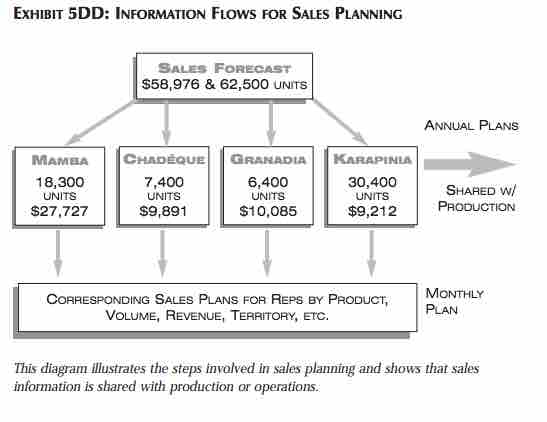The Sales Process
A sales process is a systematic approach to selling a product or service. A growing body of published literature approaches the sales process from the point of view of an engineering discipline.
Reasons for having a well thought-out sales process include seller and buyer risk management, standardized customer interaction in sales, and scalable revenue generation. A major advantage of approaching the subject of sales from a "process point of view" is that it offers a host of well-tested design and improvement tools from other successful disciplines and process-oriented industries. In turn, this offers potential for quicker progress. Quality expert Joseph Juran observed, "There should be no reason our familiar principles of quality and process engineering would not work in the sales process. " A sales team's fundamental job is to move a greater number of larger deals through the sales process in less time. Selling effectively enables sales teams to meet their sales goals, which are often illustrated as in .

Information Flows for Sales Planning
Sales Planning
Specific steps or stages in a sales process vary from company to company but generally include the following elements:
- Initial contact
- Application of Initial Fit Criteria
- Sales lead
- Need identification
- Qualified prospect
- Proposal
- Negotiation
- Closing
- After sales service
An alternate but similar series of steps is as follows:
- Prospecting/Initial contact
- Preapproach—planning the sale
- Approach
- Need assessment
- Presentation
- Meeting objections
- Gaining commitment
- Follow-up
These eight steps of the sales process are more current and accurate than traditional sales. These are the typical steps taken, which are usually performed in the same order—however, this can vary depending on the current situation. These steps of the sales process are given (pg. 66) and explained in one of the most influential sales textbooks written by Gregory A. Rich, Rosann L. Spiro, and William J Stanton, entitled "Management of a Sales Force" Twelfth Edition.
Mapping a process provides a starting point for further careful analysis and continuous improvement. Diagramming a process flow is considered to be one of the seven basic quality improvement tools. Elements in the list above (among many others) have been described and flow-charted in the published literature. Some examples have primarily focused on functions performed by a sales "department". At least one cross-functional approach depicts and integrates a variety of interdependent areas, such as sales, marketing, customer service, and information systems.
From a seller's point of view, a sales process mitigates risk by stage-gating deals based on collection of information or execution of procedures that gate movement to the next step. Of the large number of initially interested persons on the narrow end of orders, only a fraction of the initially interested people remain and actually place an order. This controls seller resource expenditure on non-performing deals. Ideally this also prevents buyers from purchasing products they don't need, though such a benefit requires ethical intentions by the seller. Because of the uncertainty of this assurance, buyers often have a buying or purchasing process. The interface between the selling and buying processes has also been diagrammed.
A formalized sales process is generally more common for companies that either have complex sales cycles, large revenue risks that require systematic assurance of revenue generation, and/or those that choose to use a more consultative sales approach (e.g. Saturn, IBM, Hewlett-Packard).
An effective sales process can be described through steps that walk a salesperson from meeting the prospect all the way through closing the sale. Often a bad sales experience can be analyzed and shown to have skipped key steps. This is where a good sales process mitigates risk for both buyer and seller. A solid sales process also has the dramatic impact of forecasting accuracy and predictability in revenue results.
Many companies develop their own sales process; however, off-the-shelf versions are available from a number of companies in the sales performance improvement industry. A large number of these methods have been described by their promoters in books available to the public, primarily addressing tactics employed by an individual sales representative. These provide a customizable process and a set of electronic tools that can be freestanding or integrated with the company's SFA, CRM, or other opportunity management system.